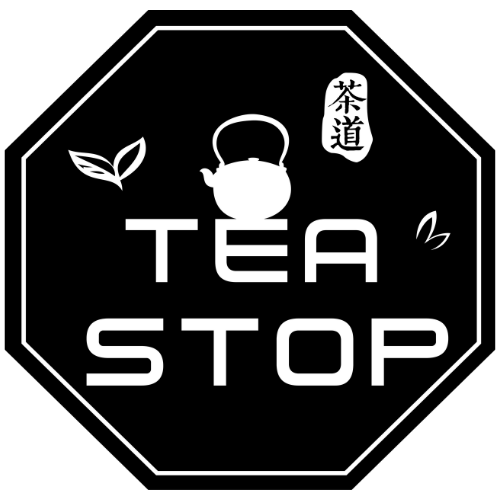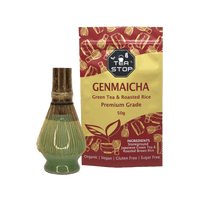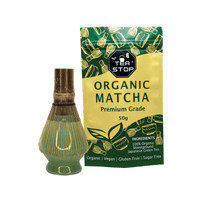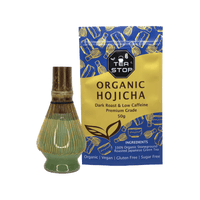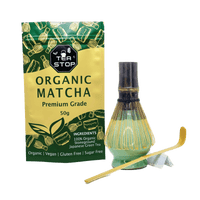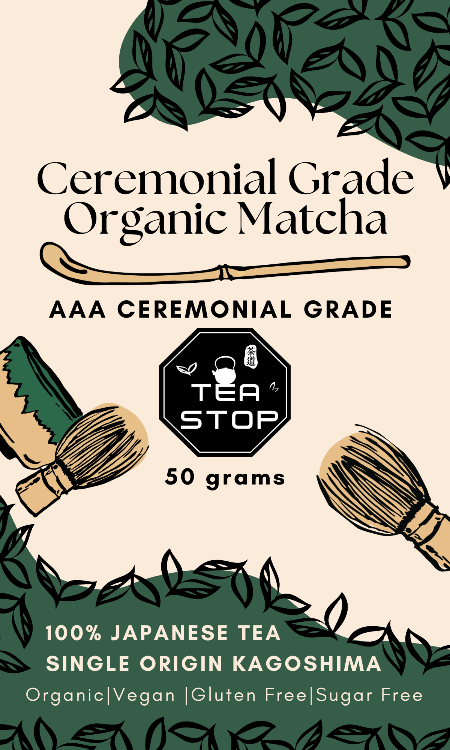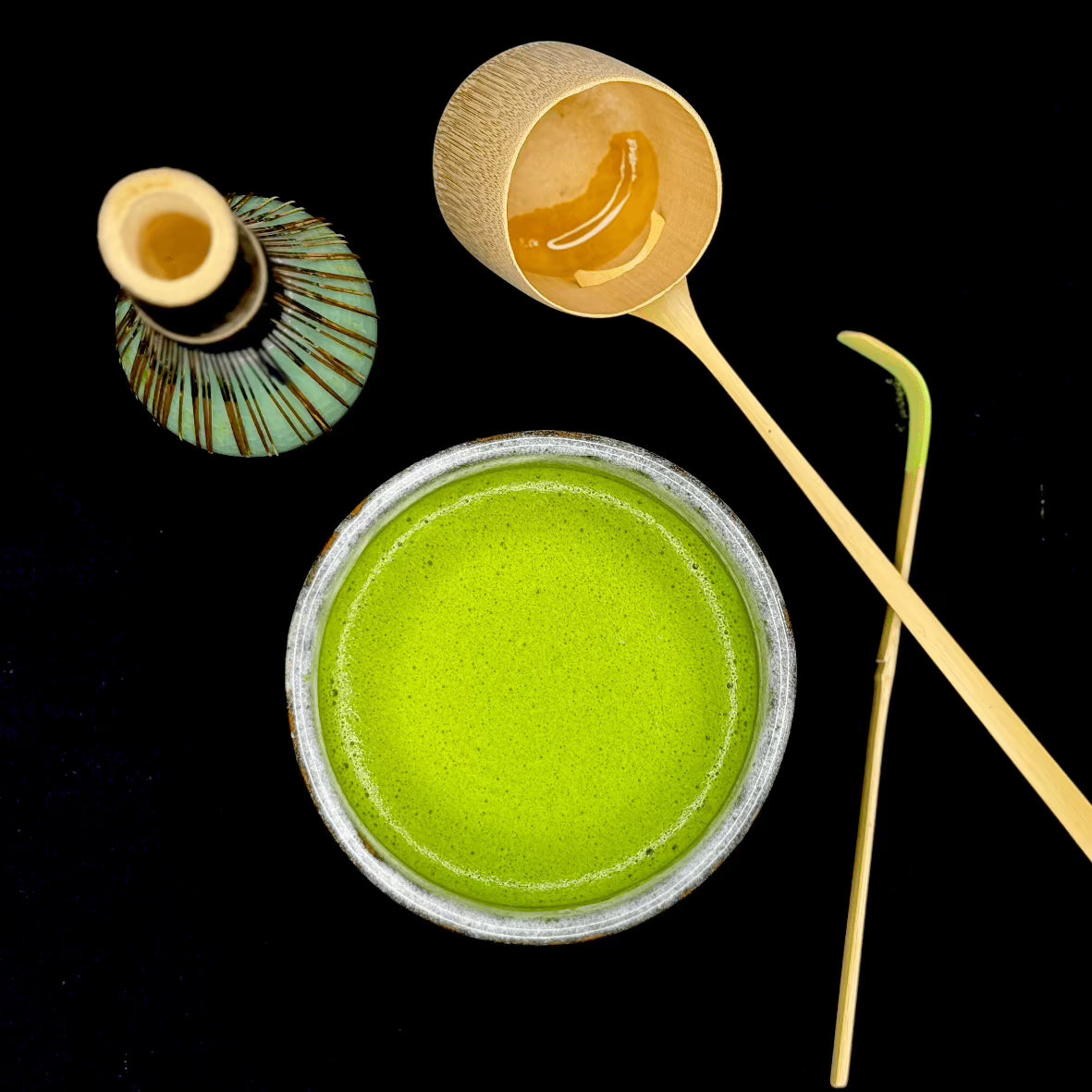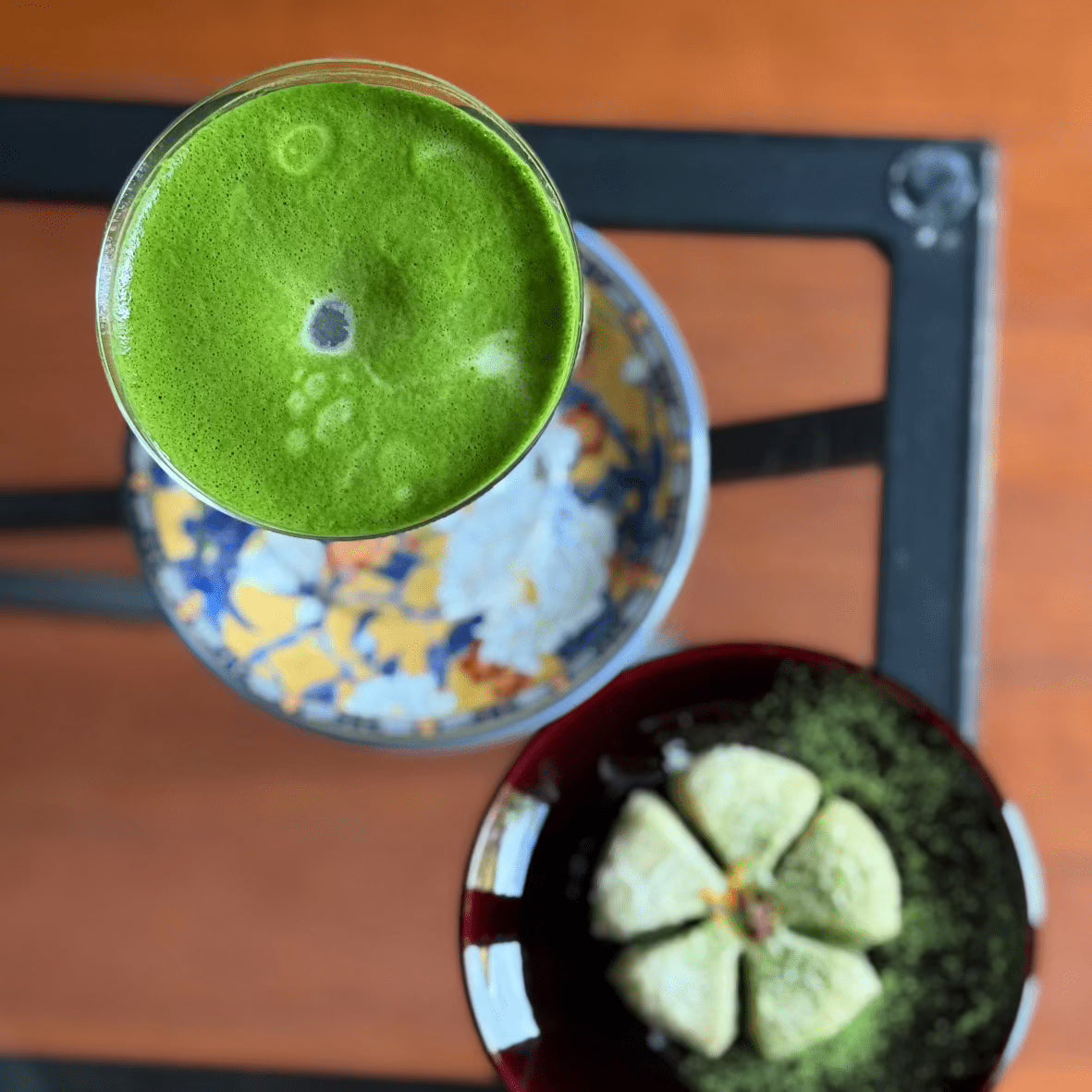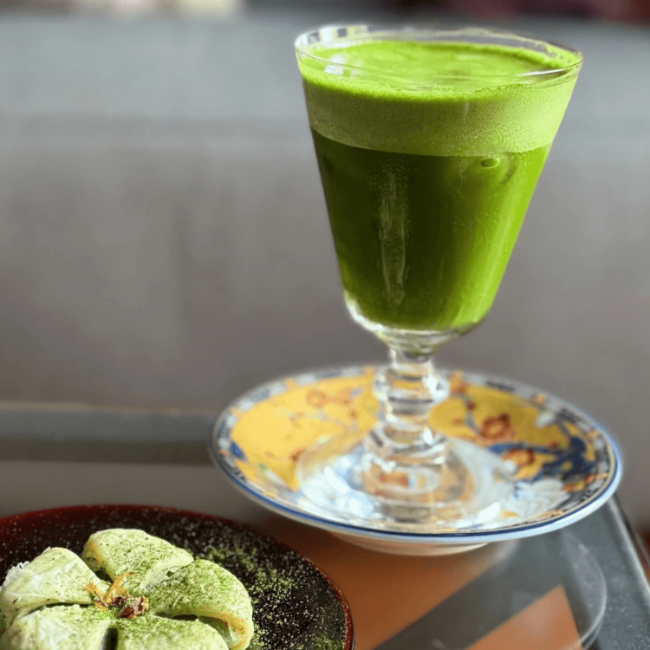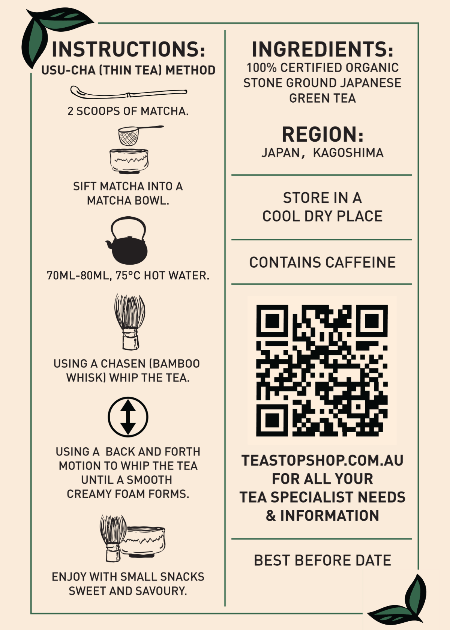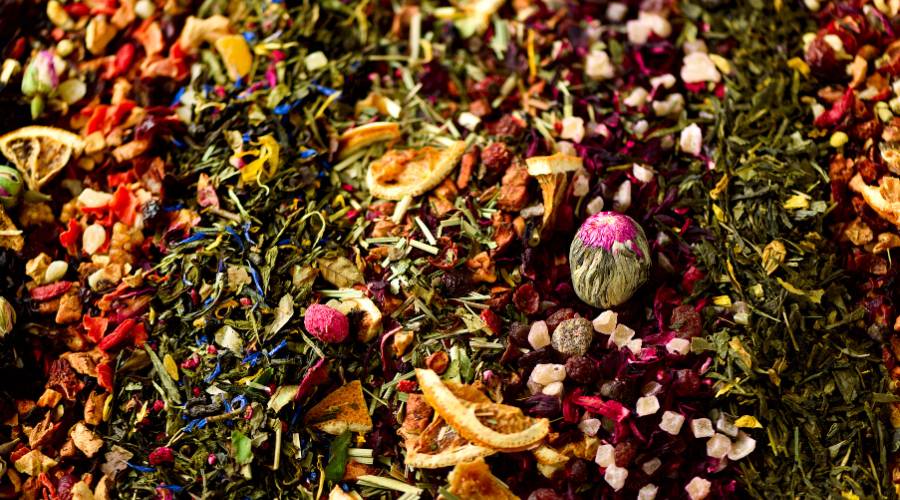
Tea Trends 2025: What's New?
Share
Exploring the tea trends of 2025 offers a glimpse into the future of tea, revealing innovative shifts that are set to redefine how we enjoy this timeless beverage. As the tea market evolves, these emerging trends not only impact consumer preferences but also drive industry advancements. Understanding these changes is crucial for tea enthusiasts who wish to enhance their experience with the latest in tea offerings.
Staying updated with the latest tea trends ensures you savor every cup with a renewed appreciation for both tradition and innovation. Whether you're drawn to organic blends or curious about exotic flavors, keeping abreast of these developments enriches your journey through the dynamic world of tea. By delving into these tea market trends, you can discover new favorites and deepen your connection to this beloved drink.

1. Organic and Sustainable Teas
The demand for organic tea continues to rise as health-conscious consumers seek chemical-free options. With increasing awareness about nutrition and well-being, individuals are turning towards teas that promise purity and natural ingredients. These eco-friendly options not only cater to personal health but also resonate with a broader commitment to environmental sustainability.
Sustainable practices in tea production play a crucial role in shaping consumer preferences. The shift towards environmentally responsible farming methods is evident as more brands adopt these practices to meet the expectations of conscious buyers. By supporting sustainable tea production, consumers contribute to the preservation of ecosystems and fair labor conditions.
Choosing organic loose leaf tea from reputable sources such as Tea Stop Shop offers numerous benefits:
- Quality Assurance: Provides 100% organic quality, ensuring no synthetic chemicals or pesticides.
- Superior Flavor and Nutrients: Retains more flavor, nutrients, and aroma compared to conventional tea bags.
- Eco-Friendly Packaging: Often packed in ways that minimize environmental impact.
Tea Stop Shop's commitment to sourcing from the world's best tea gardens ensures unmatched flavor and aroma, making it a preferred choice among discerning tea enthusiasts. This alignment with sustainable values allows consumers to enjoy their favorite beverage while supporting a healthier planet.
2. The Rise of Rooibos Tea
Rooibos tea is gaining popularity among tea lovers, thanks to its caffeine-free nature and unique flavor. This herbal tea, which comes from South Africa, has a naturally sweet and earthy taste, making it a great choice for those who want to expand their tea collection without the jitters that come from drinking caffeine.
Why People Love Rooibos Tea
The appeal of rooibos goes beyond just its delicious taste. This tea is packed with antioxidants, offering various health benefits that attract health-conscious consumers. Studies have shown that regularly drinking rooibos can lead to better heart health and reduced oxidative stress, thanks to its high levels of aspalathin and nothofagin—compounds known for their antioxidant properties.
Here are some reasons why rooibos tea is becoming increasingly popular:
- Unique Flavor Profile: Its naturally sweet and earthy taste appeals to a wide range of preferences.
- Caffeine-Free: Perfect for enjoying any time of day, especially for those who are sensitive to caffeine.
- Antioxidant-Rich: Helps support overall health by fighting against oxidative stress.
As more people prioritize their health and well-being, the demand for teas like rooibos continues to grow. Its combination of delightful flavor and potential health benefits makes it a top choice in the ever-expanding world of specialty teas.
3. Exotic Flavors on the Horizon
The tea market in 2025 is witnessing a surge in demand for exotic tea flavors as consumers seek more adventurous taste experiences. This trend is transforming how individuals explore and enjoy tea, with many eager to venture beyond traditional options.
1. Jasmine-Infused Teas
Known for their delicate and fragrant aroma, jasmine teas offer a floral twist that captivates the senses. Jasmine green tea, in particular, is gaining popularity among those who appreciate its soothing qualities combined with a unique taste profile.
2. Spiced Blends like Chai
Spiced teas continue to allure with their rich and aromatic blends. Chai tea, a classic example, combines black tea with spices such as cardamom, cinnamon, ginger, and cloves. Its robust flavor and warming properties make it a favorite choice for those seeking a comforting beverage.
Exploring new and exotic flavors allows consumers to broaden their palates and indulge in unique sensory experiences. These trends not only cater to the adventurous but also introduce new dimensions of enjoyment within the world of tea. As more people embrace this shift towards novelty, exotic flavors are set to become staples in tea collections worldwide.
4. Matcha's Continued Dominance
Matcha tea continues to captivate the taste buds and hearts of tea enthusiasts worldwide. Its popularity spans from the intricate beauty of traditional Japanese tea ceremonies to the bustling urban cafes serving vibrant matcha lattes. The unique preparation method, which involves grinding whole green tea leaves into a fine powder, allows matcha to offer a more concentrated flavor and nutrient profile compared to other teas.
Impressive Health Benefits
One of the standout features of matcha is its impressive array of health benefits. Rich in antioxidants, particularly catechins, matcha is celebrated for its potential to combat oxidative stress and improve overall health. Many consumers turn to matcha for its energy-boosting effects without the jittery sensation often associated with coffee. This makes it a favored choice for those seeking a calm yet alert state of mind.
Culinary Versatility
The culinary versatility of matcha further solidifies its status in the tea industry. Beyond traditional beverages, matcha finds its way into various culinary creations—from smoothies and desserts to savory dishes—demonstrating its flexibility and appeal in diverse gastronomic contexts. As consumers continue to seek both wellness and innovation in their tea experiences, matcha remains an enduring favorite that meets these demands with grace and vibrancy.
5. The Rise of Functional Teas
The demand for functional teas continues to surge as consumers seek beverages that offer specific health benefits beyond basic hydration. This trend is driven by an increased awareness of wellness and a desire to incorporate natural remedies into daily routines.
Functional teas are designed to address particular health concerns or enhance well-being. Ginger-infused blends, for instance, are celebrated for their potential to boost immunity and aid digestion. Ginger’s anti-inflammatory properties make these teas a popular choice during flu season or as a soothing remedy for an upset stomach.
Another standout in the functional tea category is chamomile-based varieties, renowned for their calming effects. Chamomile has been traditionally used to relieve stress and promote relaxation, making it an excellent evening beverage for those seeking tranquility after a long day.
Here are some other functional teas gaining popularity:
- Peppermint tea: Known for its refreshing taste, it is often used to alleviate digestive discomfort and improve focus.
- Turmeric tea: Offers anti-inflammatory benefits and is valued for promoting joint health.
- Hibiscus tea: Rich in antioxidants, it supports heart health and can aid in managing blood pressure levels.
These functional teas cater to the growing consumer interest in holistic health solutions, providing both delightful flavors and targeted wellness benefits.

6. Cold Brew Tea Market Growth (2024-2031)
The cold brew tea market is expected to grow significantly from 2024 to 2031. This growth is driven by changing consumer preferences and the demand for refreshing beverages. It is becoming increasingly popular among health-conscious consumers seeking alternatives to traditional iced teas.
Key Factors Contributing to the Growth of Cold Brew Tea
Several factors are contributing to this trend:
- Ease of Preparation: Cold brew tea is simple to make, requiring minimal effort compared to hot brewing methods.
- Smooth Flavor Profile: The cold brewing process results in a smoother, less astringent taste, appealing to those sensitive to bitterness.
- Health Appeal: Many consumers are drawn to cold brew tea due to its lower caffeine content and potential health benefits, such as hydration and antioxidant properties.
The rise of ready-to-drink cold brew options in retail stores further fuels market growth. Brands are innovating with unique flavor combinations and organic ingredients, catering to the evolving tastes of tea drinkers.
As you explore tea trends for 2025, consider how cold brew tea fits into your beverage choices. Its refreshing nature and versatility make it an attractive option for warm weather enjoyment or as a casual daily drink.
7. Customization Trends in Tea Experiences (Personalized Blends)
Brands are increasingly tapping into the demand for customizable tea experiences, offering modular systems that empower consumers to craft their unique blends. This trend allows tea enthusiasts to personalize their beverages, tailoring flavor profiles and ingredient combinations to suit their tastes and preferences. Online platforms like Tea Stop Shop have embraced this movement by providing a diverse range of organic loose leaf teas and complementary ingredients, enabling users to mix-and-match from the comfort of their homes.
Several factors drive this trend:
- Personalization: Consumers seek experiences that reflect their tastes.
- Variety: Access to a wide array of ingredients encourages experimentation.
- Convenience: Online platforms make it easy to explore new combinations.
These customizable offerings align with the broader consumer interest in health and wellness. By choosing specific ingredients, individuals can create blends that not only tantalize the taste buds but also cater to specific dietary needs or health goals. For instance, adding antioxidant-rich ingredients or opting for caffeine-free options provides both flavor and functional benefits.
Tea lovers are no longer limited to pre-packaged selections; they now have the tools to become their tea masters. This shift towards personalization is redefining how we experience one of the world's most beloved beverages, making each cup as unique as its creator.
8. Afternoon Tea Revival (Modern Traditions)
The charm of afternoon tea practices is experiencing a renaissance, blending tradition with modern flair. Classic pastries are now paired with innovative flavor combinations, enticing both seasoned tea enthusiasts and newcomers alike. This revival emphasizes creativity, allowing hosts to experiment with unique tea blends and confectionery.
Tips for Hosting an Aesthetically Pleasing Afternoon Tea Gathering
- Select a Theme: Choose a theme that reflects your style, whether it's vintage elegance or a contemporary twist.
- Curate a Diverse Menu: Include traditional items like scones and finger sandwiches alongside adventurous options such as matcha-infused pastries or exotic fruit tarts.
- Invest in Presentation: Use tiered cake stands and colorful tableware to elevate the visual appeal. Fresh flowers or greenery can enhance the ambiance.
- Choose Your Teas Wisely: Offer a variety of teas that complement your menu. Consider organic loose leaf options for superior flavor and quality.
- Create an Inviting Atmosphere: Soft music and comfortable seating can transform your gathering into a delightful experience.
Embrace this opportunity to personalize your afternoon tea gatherings, making them memorable social events that celebrate both tradition and innovation.
Digital Engagement and Social Media Influence on Tea Culture Among Gen Z Consumers (2025)
Social media platforms have changed how tea culture is experienced, especially among Gen Z consumers. This group loves visual content, making platforms like Instagram and TikTok crucial for brands wanting to connect with younger audiences.
1. Influencer Marketing
Successful campaigns often feature influencers who showcase unique tea experiences, from brewing techniques to innovative recipes. These endorsements create authentic connections with potential buyers.
2. User-Generated Content
Brands encourage customers to share their tea moments, fostering community engagement. Hashtags like #TeaTime and #MatchaMoments generate buzz and visibility.
3. Case Studies
Here are some examples of how brands have successfully used digital engagement and social media:
- A well-known tea brand partnered with influencers to create a series of short videos highlighting the preparation of premium loose leaf teas. The campaign saw a significant increase in brand awareness and sales.
- An emerging rooibos tea company utilized social media challenges, encouraging users to create their versions of tea-based drinks. This initiative not only promoted the product but also engaged consumers creatively.
Digital engagement shapes consumer preferences, driving trends towards unique blends and health-conscious options. As brands adapt to these changes, they use the power of social media to connect with a new generation of tea lovers.
Health-Conscious Choices Among Consumers (Sugar-Free Options) (2025)
The shift towards health-focused beverages is becoming increasingly apparent in 2025. Consumers are prioritizing reduced sugar intake, driven by a growing awareness of nutrition and wellness. This trend is reshaping the tea market, as more people opt for options that align with their health goals.
Key highlights include:
-
Sugar-Free Tea Options: Many tea brands are developing blends that are naturally low in sugar or free from added sweeteners. This allows consumers to enjoy flavorful beverages without compromising their health.
-
Beauty-Enhancing Teas: A range of wellness products is gaining traction, focusing on beauty benefits. Examples include:
- Collagen-Infused Teas: These support skin elasticity and hydration.
- Detox Teas: Formulated with ingredients like dandelion and green tea, promoting detoxification.
-
Adaptogenic Blends: Incorporating herbs such as ashwagandha can help manage stress while delivering a unique flavor profile.
As you explore tea trends 2025, consider how these healthier options can enhance your daily routine. Choosing organic loose leaf teas from reputable sources, like Tea Stop Shop, ensures premium quality and supports your commitment to health-conscious living.
FAQs (Frequently Asked Questions)
What are the key tea trends to watch for in 2025?
The key tea trends for 2025 include a growing demand for organic and sustainable teas, the rise of rooibos tea, adventurous exotic flavors, the continued popularity of matcha, the functional tea movement, and an increase in cold brew tea offerings. These trends reflect consumer preferences for health-conscious choices and innovative tea experiences.
Why is there an increasing demand for organic and sustainable teas?
Consumers are increasingly health-conscious and prefer organic and chemical-free teas that align with eco-friendly practices. This trend is shaping consumer choices within the tea industry, as more people seek out reputable sources for organic loose leaf tea, such as Tea Stop Shop.
What makes rooibos tea popular among consumers?
Rooibos tea's popularity stems from its unique flavor profile, caffeine-free nature, and potential health benefits, including its antioxidant properties. These factors make it a desirable choice for those looking for a healthy and flavorful beverage.
How is matcha maintaining its dominance in the tea market?
Matcha continues to be a top choice due to its versatility in various forms—from traditional ceremonies to modern beverages like matcha lattes—and its numerous health benefits, including high antioxidant content and energy-boosting effects.
What is the functional tea movement?
The functional tea movement refers to the rising demand for teas that provide specific health benefits beyond hydration. Examples include ginger-infused blends for immunity support or chamomile-based varieties for relaxation, catering to consumers seeking wellness-oriented products.
How is social media influencing modern tea culture among Gen Z consumers?
Social media platforms are powerful tools in shaping modern tea culture among younger demographics like Gen Z. Successful influencer campaigns have boosted brand visibility and influenced consumer choices regarding specific tea products, making digital engagement crucial in this market.
